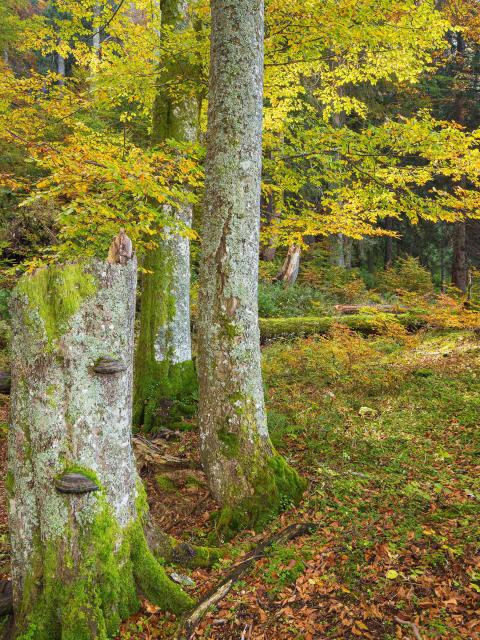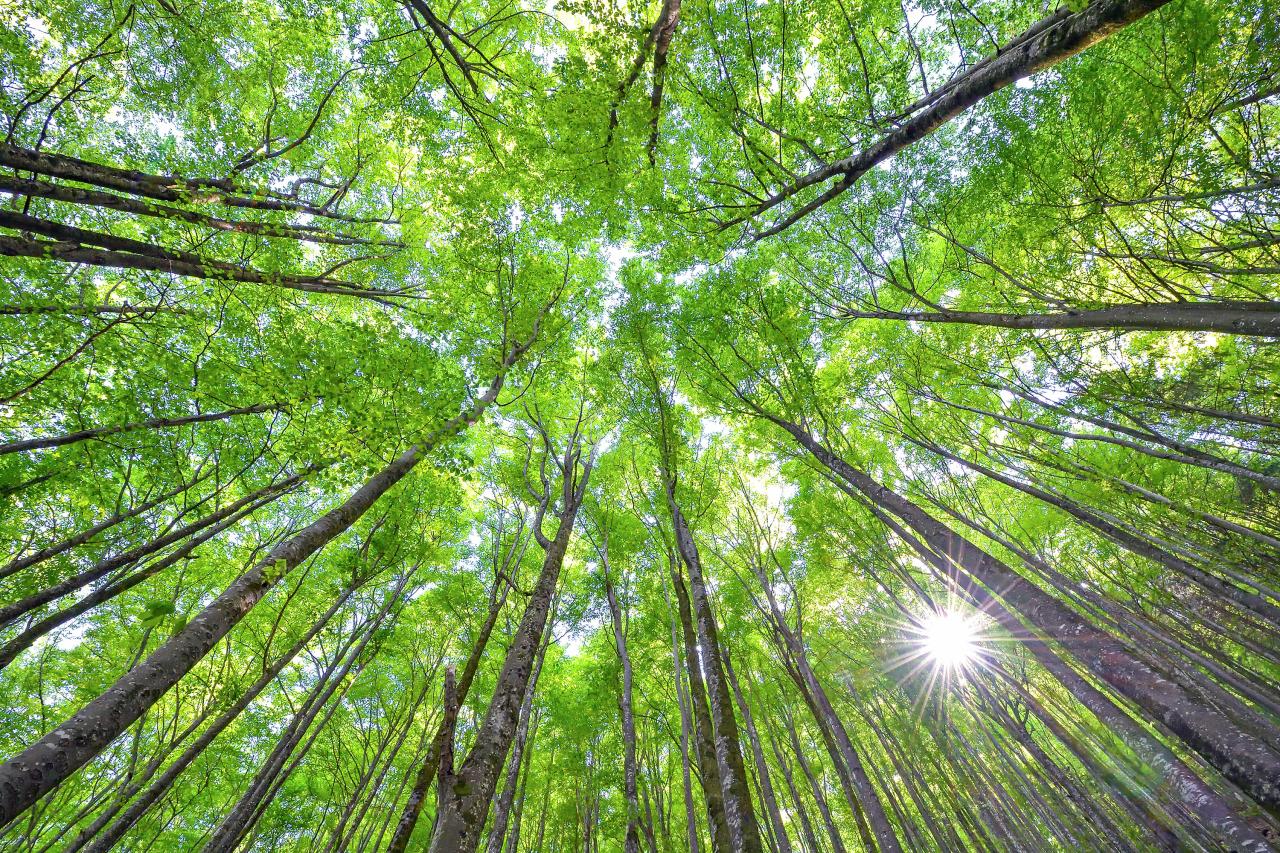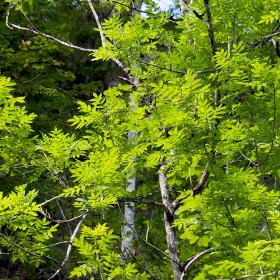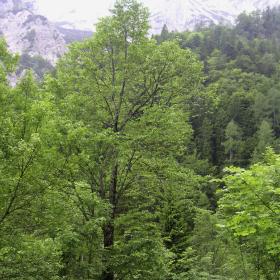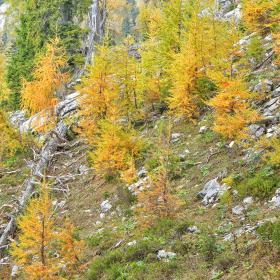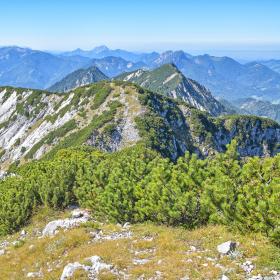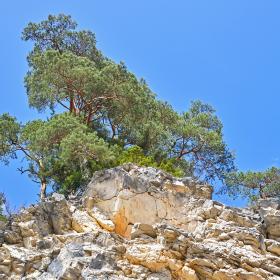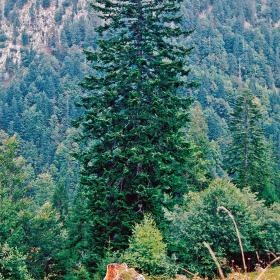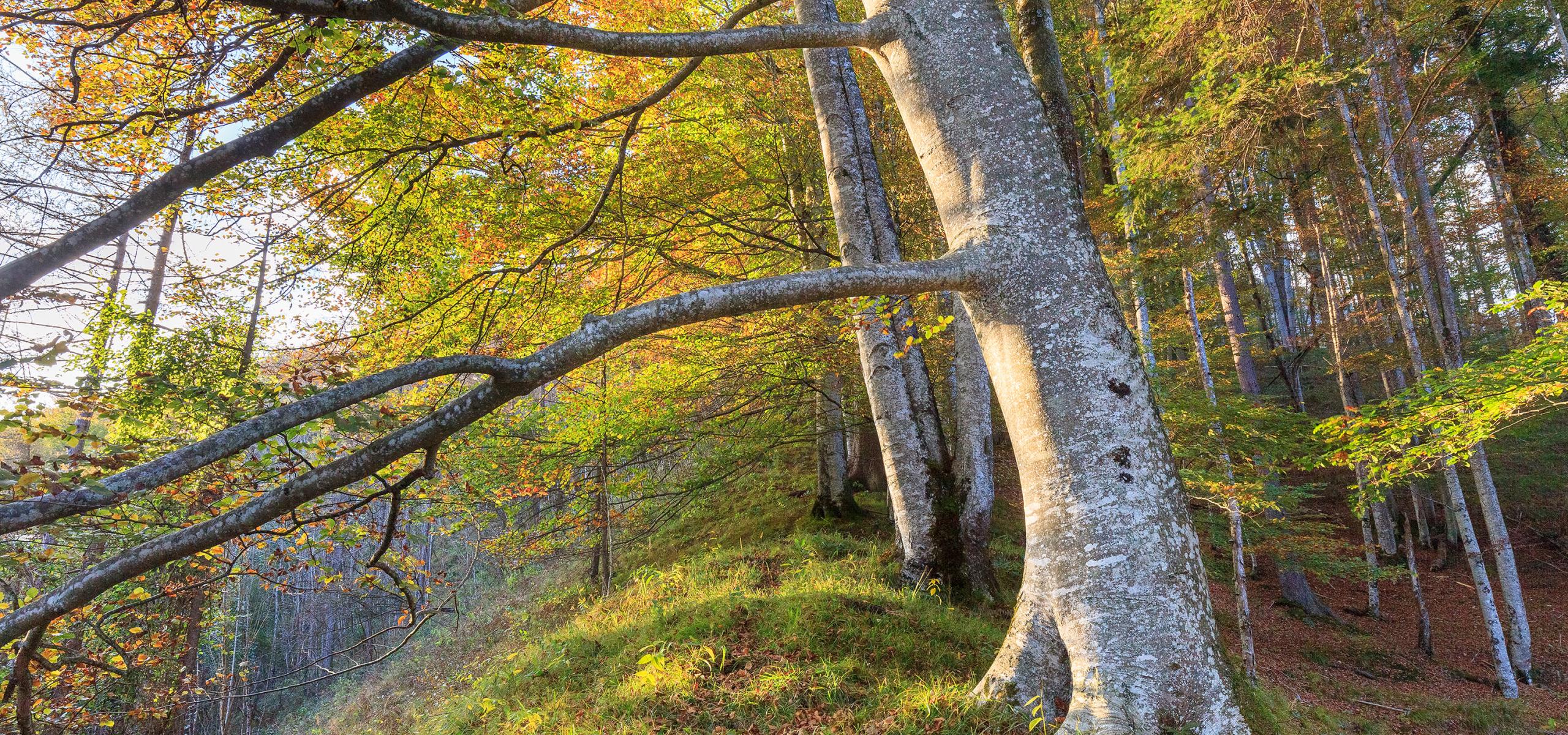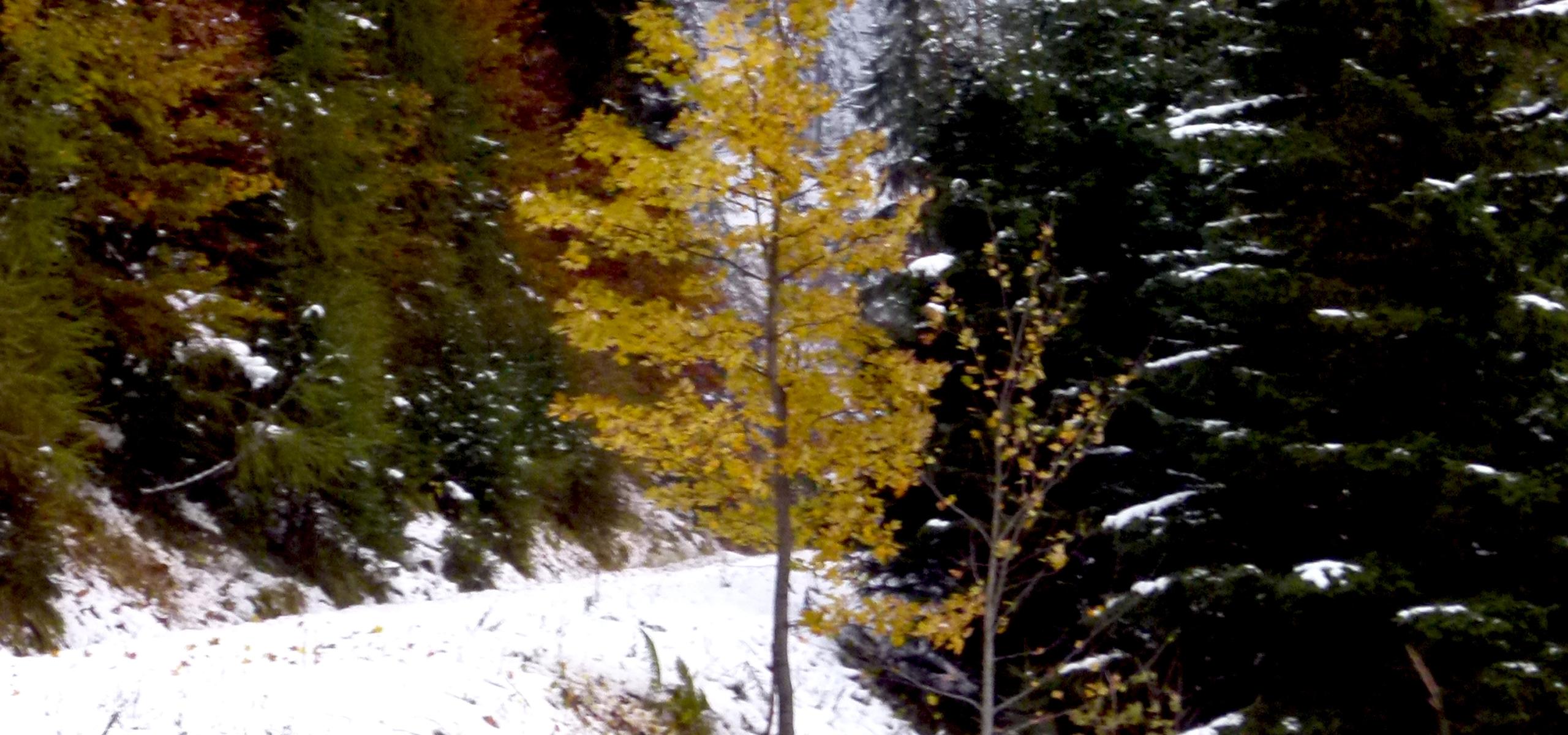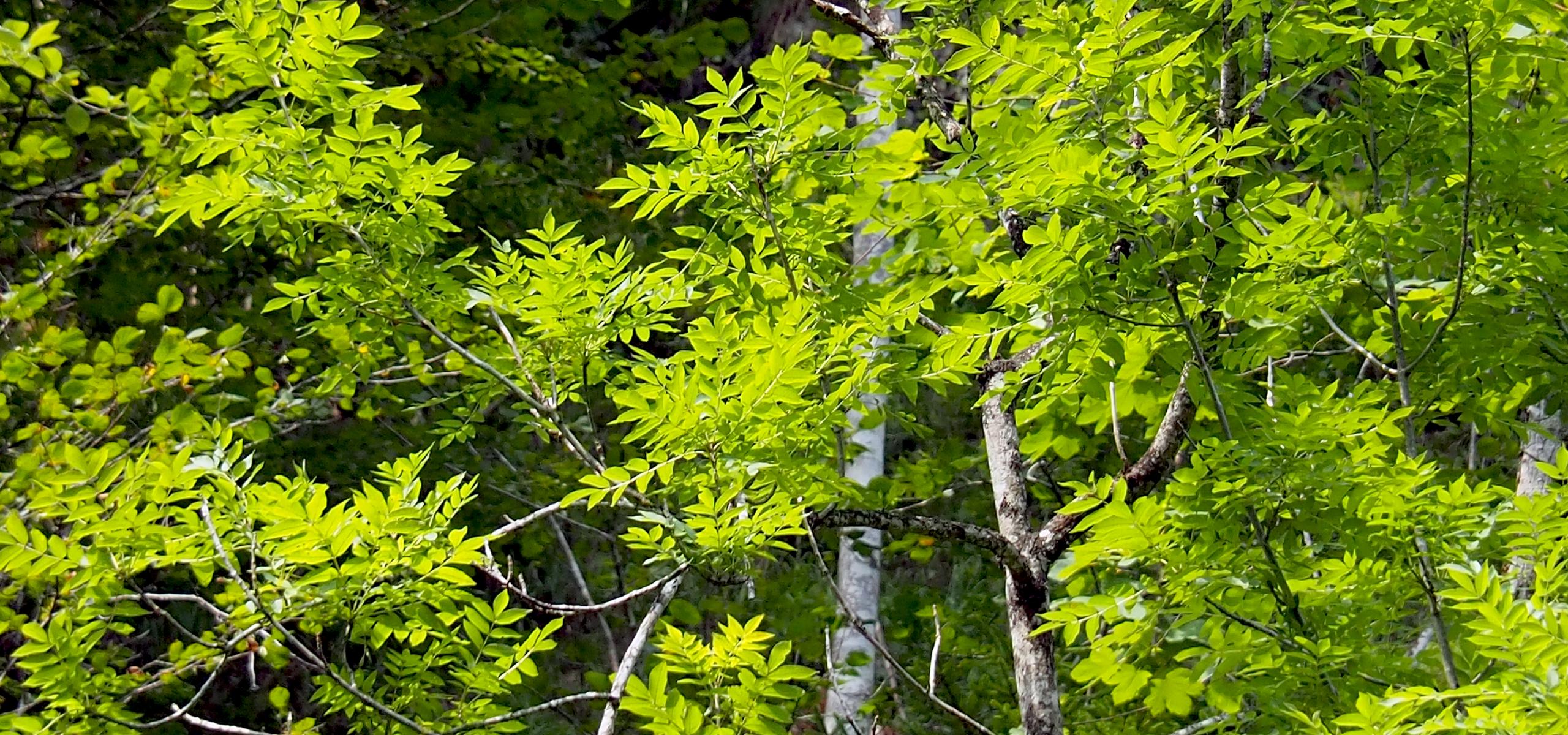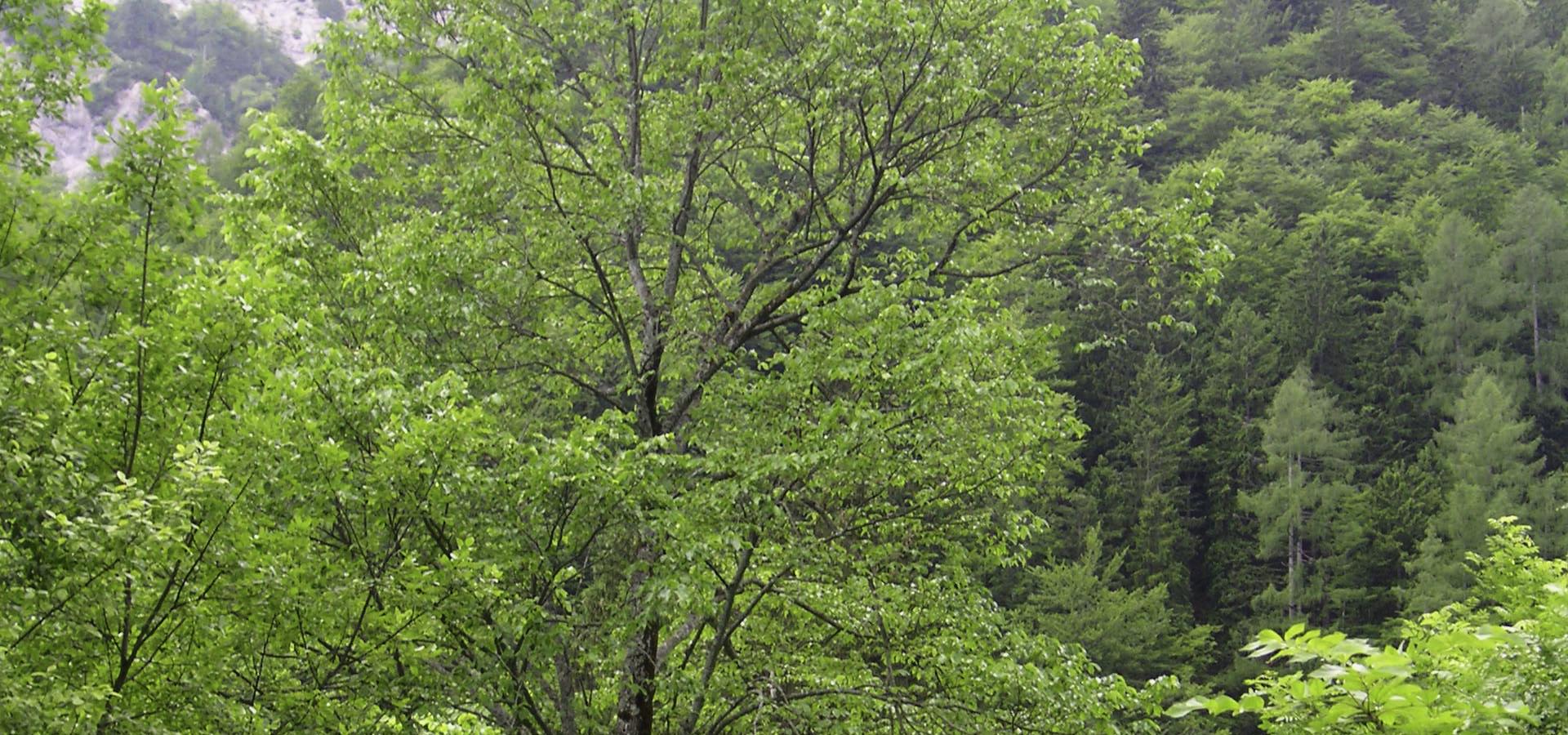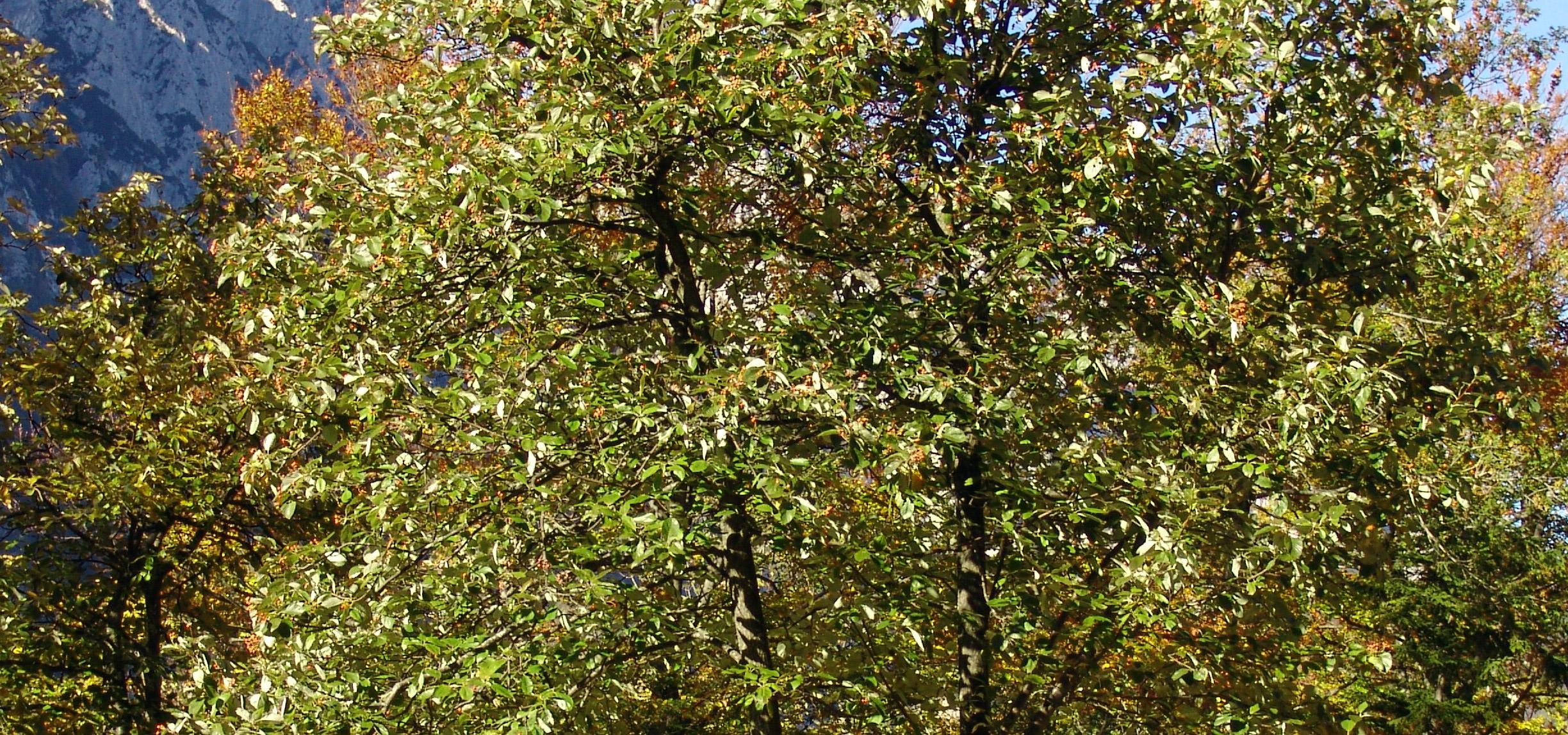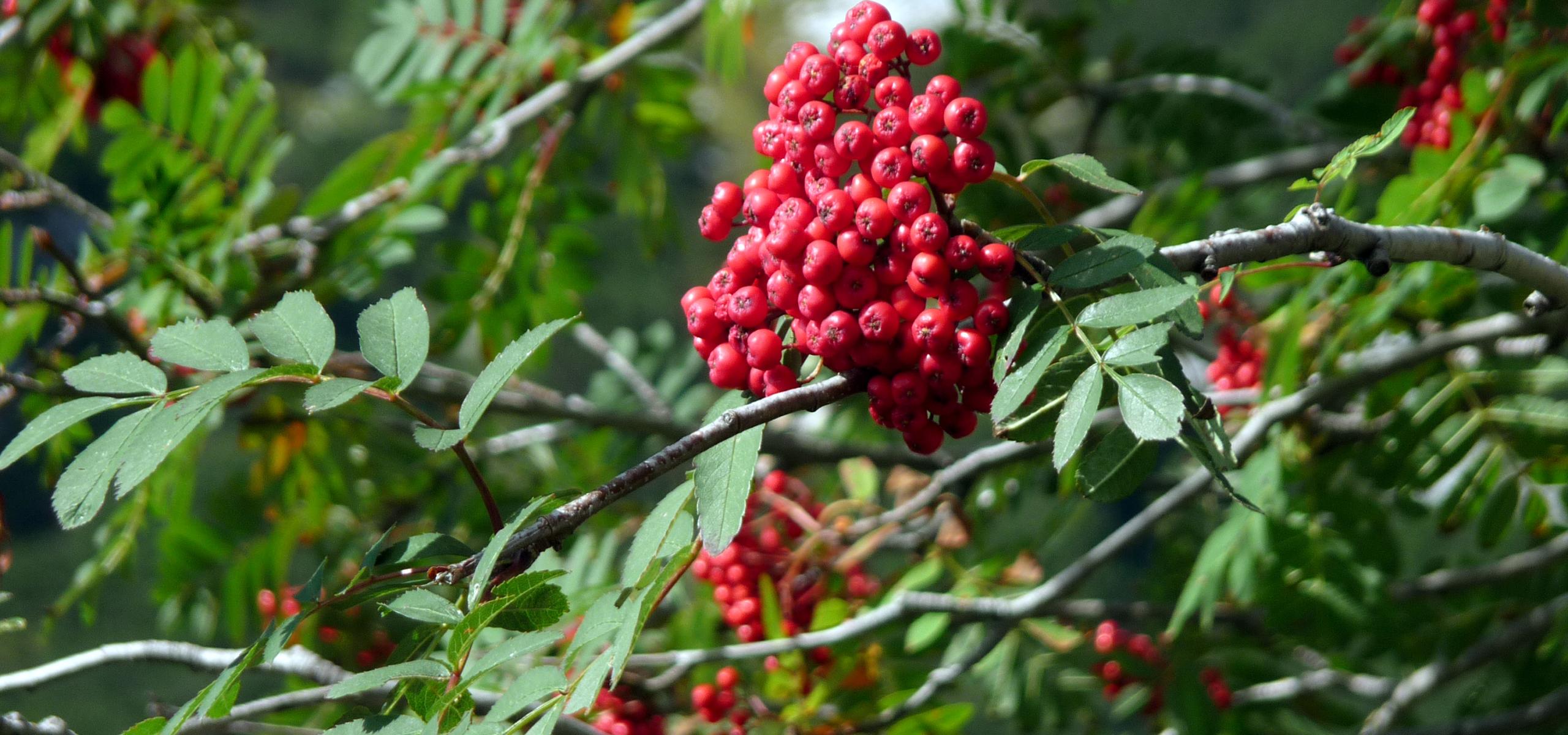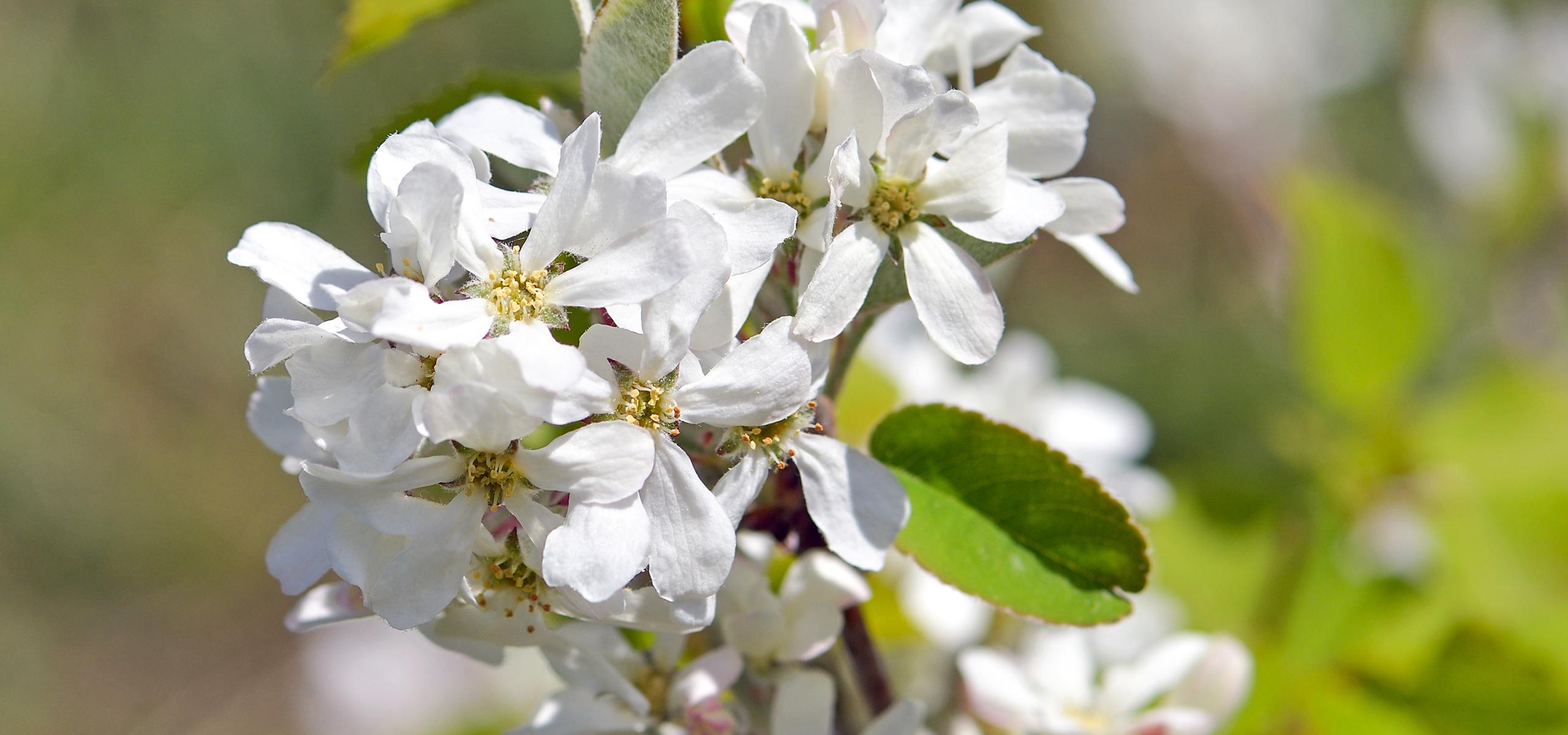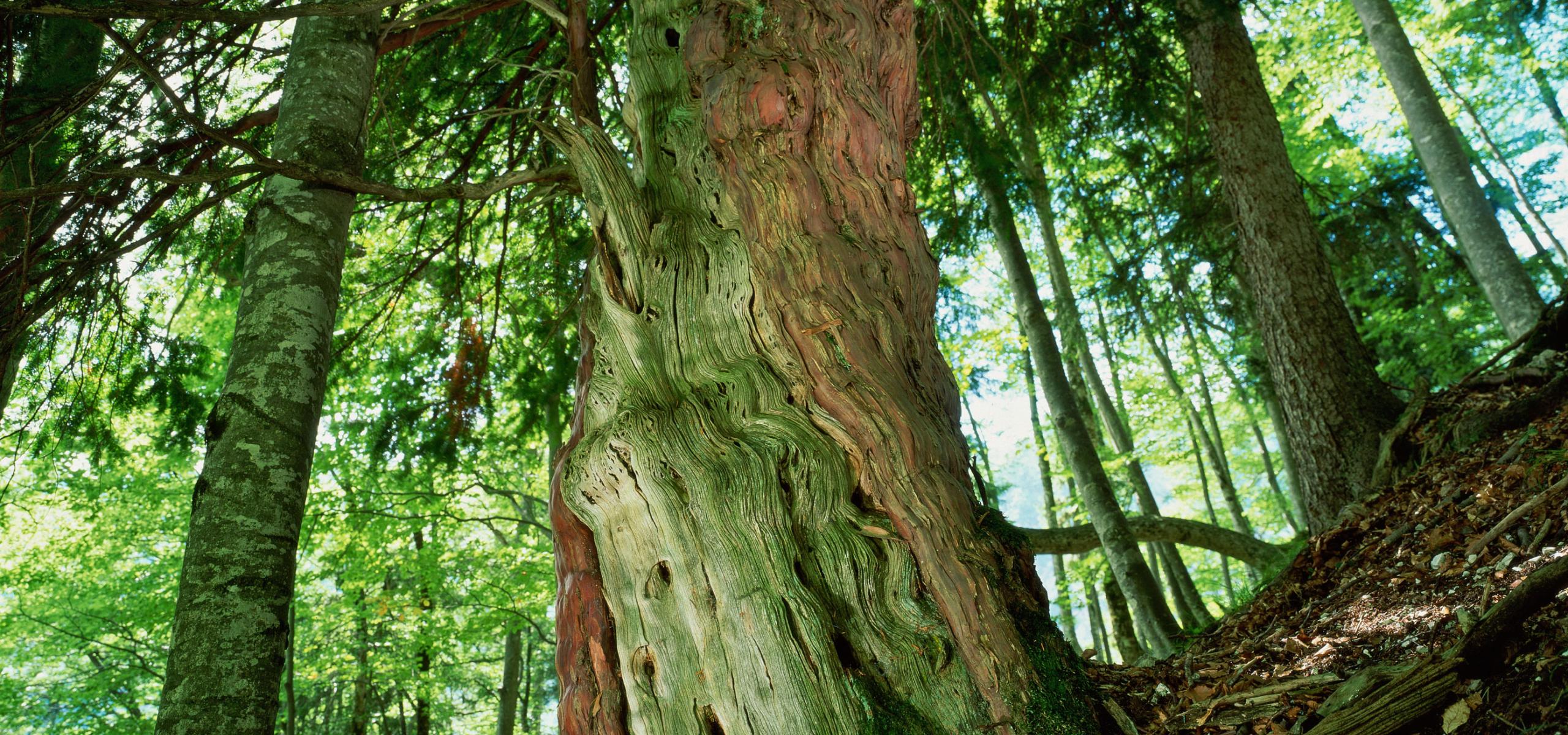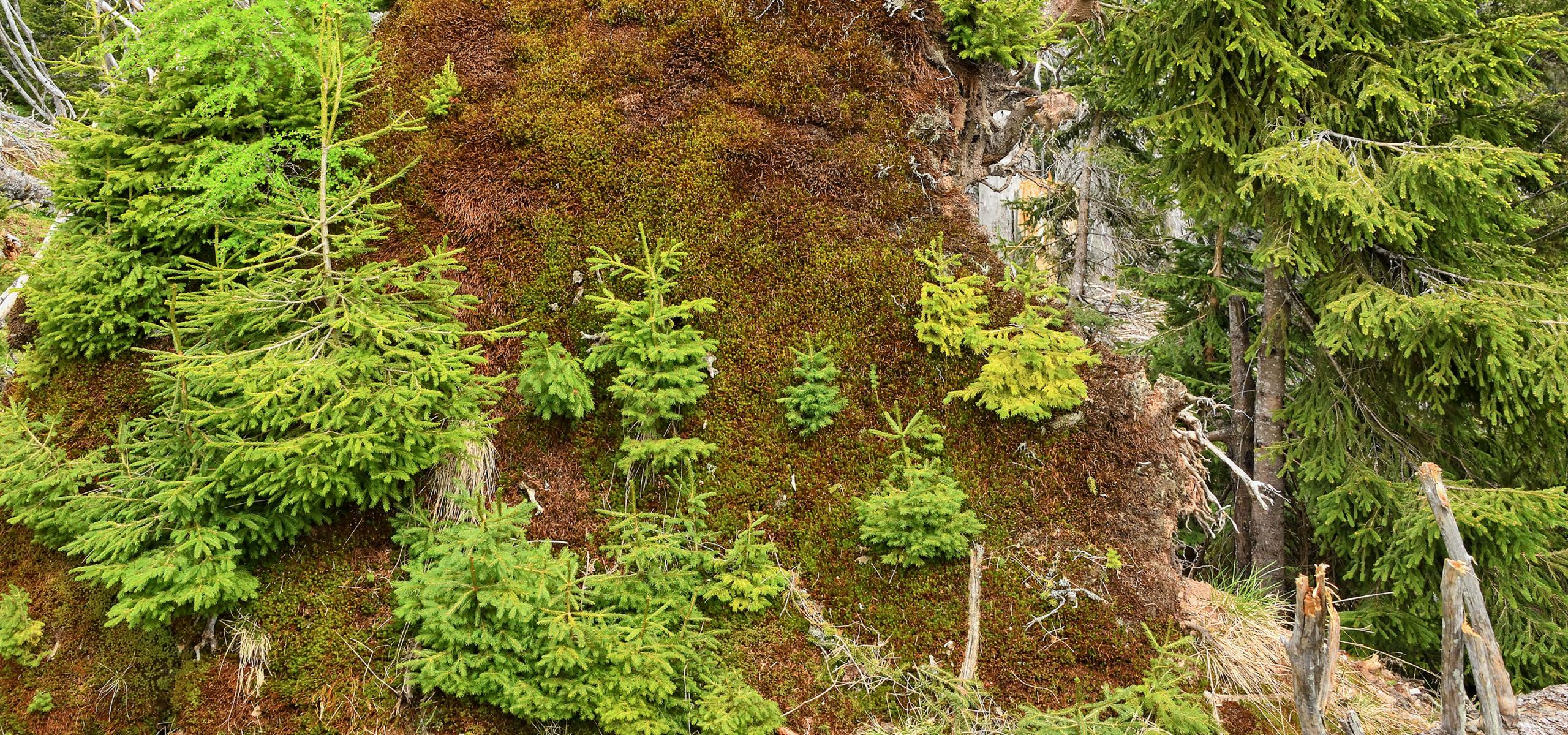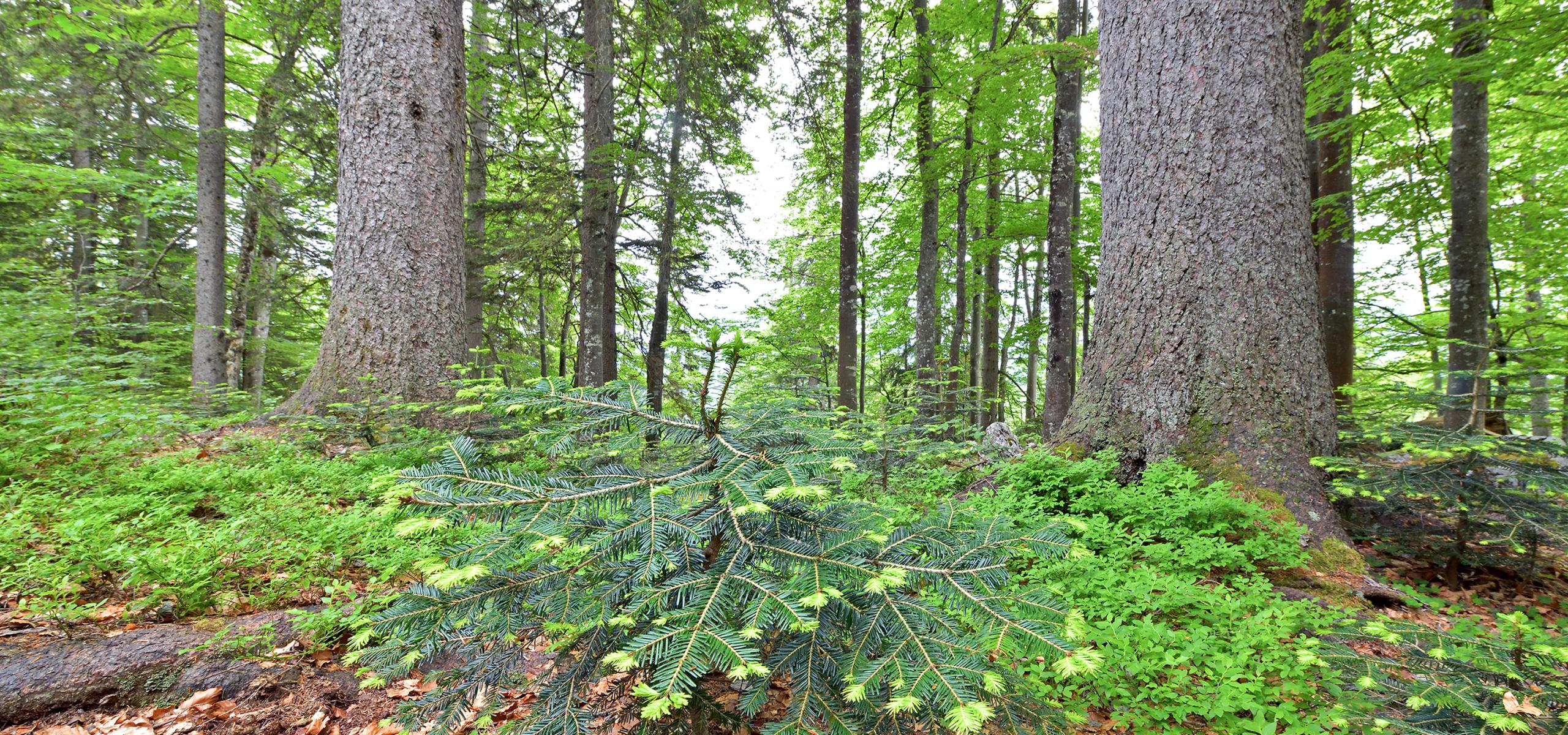Latin name: Fagus sylvatica
Characteristics: 30 - 45 m tall, light gray bark, leaves smooth-edged, strong green, turning to the typical red in autumn; seeds known as beechnuts;
Habitat: Moist, temperate climate, nutrient-rich, slightly acidic to calcareous soils; shade-tolerant when young, requires more light later on
The range of the European beech extends from the Mediterranean to southern Sweden and in the east to the Urals. It is a typical tree species of the snow- and rain-rich reservoirs on the edges of the Alps, where it can be found from the valleys up to around 1,400 meters. For economic reasons, it has been greatly reduced in favor of spruce over the last few centuries.
bark and the shiny leaves, which turn an intense yellow to brown-red color in autumn. However, the name copper beech refers to the color of the wood. Until the age of coal and oil, beech wood was the most important source of energy. However, it was difficult to transport as undried beech trunks do not float and therefore could not be rafted. In optimal locations, beech trees can grow up to 300 years old and 45 meters high. At the tree line and in avalanche zones, it sometimes remains permanently shrub-like ("Legbuche").
The beech is a highly competitive shade tree species that loves fresh, deep, calcareous soils, high humidity and large amounts of precipitation. It is at its best in the montane altitudinal zone, which is why it is also known as the beech zone. It is somewhat rarer on slopes and in hollows, as it avoids wet soils.
Beech is found in almost all of our forest communities, with the exception of subalpine mountain forests. It develops optimally in the beech forest association (Fagion), which is made up of calcareous beech forests, brown earth beech forests and acidophilous beech forests. Oak and other deciduous trees are found at lower altitudes, while spruce, fir and mountain maple are found at higher altitudes. At Kalkalpen National Park , the snow rose beech forest is widespread on calcareous soils, the woodruff beech forest on decalcified brown loams, and the sedge and blue-grass beech forest on drier soils.
Beech is the tree species that benefits most from the forest wilderness in the national park. On the one hand, it will reclaim the areas that it previously had to cede to spruce forests and, on the other, it will reduce the excessive proportions of larch, spruce and sycamore in the mixed forests as a result of previous forestry practices.
Status, endangerment and protection
Status Kalkalpen National Park: very common
Status Austria: common
Red List Austria (1999): -
Red List Upper Austria (1997): -
Nature Conservation Act Upper Austria (2001): -
